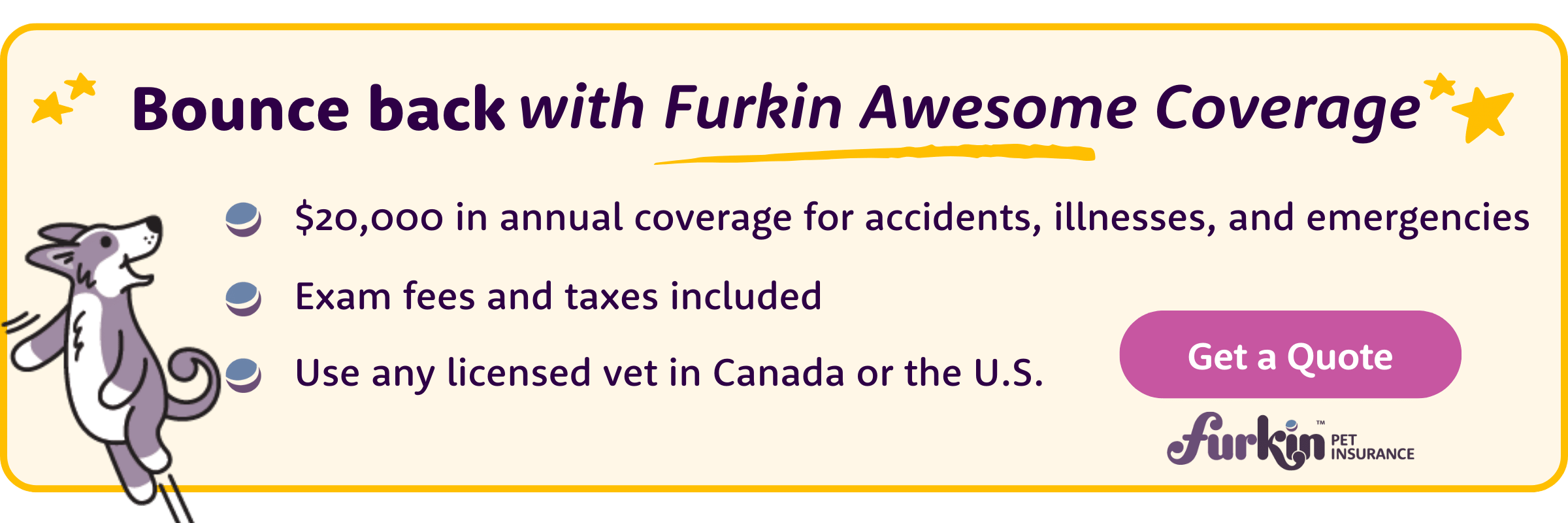Caring for your pet in the case of an unexpected illness or accident can be stressful. Add on the additional load of vet bills, exams, medications, and you’re likely looking at some hefty costs too.
With pet insurance, you may not have to worry as much.
Pet insurance saves pet owners from much of the financial stress that comes with experiencing an unfortunate event of pet illness or injury. With multiple providers, plans, policies, and prices available, there’s much to choose from when deciding on the right pet insurance for your fur family.
Here are 5 tips to make choosing the best pet insurance as simple as possible.
1. Consider what conditions your pet may experience
Although most pet insurance policies are comprehensive, there may be certain services or health conditions that are not covered.
Therefore, you should consider the ailments your fur baby is most likely to experience throughout their life and then do your research to see if these things are covered. Note that every animal is different, and their age, breed, and lifestyle will affect what health conditions they are most susceptible to.
Common ailments covered by pet insurance include:
- Accidents and injuries (e.g., hit by a car)
- Illnesses such as cancer, heart disease, and diabetes
- Accidental poisonings
- Broken bones and sprains
- Allergies
- Arthritis
- Skin conditions
- Ear infections
- Spontaneous vomiting or diarrhea
- Anesthesia and surgery
- Emergency care
- Exam fees
- Hospitalization
- Imaging such as CT scans, MRI, and X-Rays
- Medical procedures
- Parasites
- Prescription medications
On the other hand, there are some treatments that pet insurance companies don’t cover and you'll want to understand these as well.
For example, some insurance companies don't cover dental care and related conditions like periodontitis disease. However, certain dog breeds are prone to periodontitis, like Collies, Pugs, and Yorkies. So if this is the case for you, you should consider additional preventative care plans that offer coverage for dental disease procedures.
When choosing the right pet insurance, think about the conditions that affect your pet now and which situations your pet may experience in the future.
2. Understanding how much the insurance provider will reimburse
Most pet insurance companies won’t reimburse 100% of your vet bills, but many do cover a significant percentage of your costs. So, it’s important to know a pet insurance company’s reimbursement rate options before you enroll.
Many pet insurance providers will reimburse you for between 50-80% of your vet bills. Even with the best coverage, it’s always a good idea to have a little extra money set aside to cover the gap.
At Furkin, we cover 80% of your total eligible veterinary expenses, meaning you are only responsible for paying the remaining 20%. Typically, the higher reimbursement rate an insurer provides, the higher the cost of the policy.
If you are comparing pet insurance companies, be sure to understand how much they are going to reimburse you under your chosen policy. This information is key in determining how much you’ll have to pay out of your own pocket during a pet emergency.
3. Research the policy limit
The “policy limit” is the maximum amount you can get reimbursed for medical care each year. This differs between policies and providers, so it's essential to check before purchasing a plan to make sure it’s the right amount for your budget and your pet.
It's difficult to predict how expensive vet bills can be, so it's often safer to pay a little extra for a higher annual policy limit than saving a little bit on monthly premiums by choosing the lowest option. Furkin provides $20,000 in annual coverage, which is a more than enough coverage for over 99% of illnesses and accidents.
It can be difficult to plan for expensive pet emergencies, so pet insurance offers the safety net to protect you and your pet from an overwhelming vet bill. It’s best to get insurance now so you don’t have to choose between financial stress and doing what’s best for your pet’s health in the future. Plus, the earlier you enroll, the less likely it is that your pet will have any pre-existing conditions. Click here to learn more about coverage for pre-existing conditions.
4. Choosing the right deductible and premium costs
Some common insurance terminology that confuses pet parents is the difference between a “deductible” and “premium payments”.
In short, the premium is the amount you pay for the insurance policy. It's most common for premiums to be paid monthly, but you may also have the option to pay semi-annually or annually. The premium amount is determined based on factors such as your pet's age, breed, and gender, but can differ depending on the insurance provider.
The deductible is the amount you must pay towards your pet's medical care before being eligible to make a claim. For example, if your policy has a $200 deductible, you will have to cover the first $200 of healthcare bills each year before the insurance company will begin paying on your behalf.
Some pet insurance providers, such as Furkin, will give you multiple deductible options based on your pet's age. It's important to note that lower deductible options will have a higher monthly premium cost because you will be covering less expenses out of pocket each year. Furkin offers three deductible options for cats and dogs based on your pet’s age so that you can choose the right level for you and your furry friend.
5. Comparing pet insurance companies
If you’re wondering how to choose the best pet insurance, your best bet is to gather information from multiple providers. The internet has made this easier than ever, allowing you to compare pet insurance companies online and even get quotes in a matter of minutes.
When comparing pet insurance companies, consider the following:
- Is my pet eligible for this policy under the specified conditions?
- How much coverage (annual limit) do I want?
- What is the company’s reimbursement percentage/policy?
- What is the annual deductible? Is there a ‘per condition’ deductible?
- Are there any conditional exclusions? Waiting periods?
- Are there any hidden costs or fees?
- When does coverage start? (e.g., right after enrollment?)
- How do I file a claim? Is there email, phone, and chat support?
There are quite a few questions you can ask when comparing pet insurance companies. Ultimately, it all comes down to getting the coverage your pet needs at a price you can afford. But remember, the goal is to plan for the unexpected, potentially paying more now to protect yourself from large unexpected vet bills in the future.
Choose a Pet Insurance Plan Fur Your Family
Insurance is by no means the most fun part of having a pet. However, by taking the time to understand how pet insurance works, you can focus solely on giving your pup or kitty the tender loving care they need to recover quickly.
Get a quote from a reliable pet insurance company that cares. At Furkin, our priority is to provide healthy coverage fur your pet at a happy cost to you.





